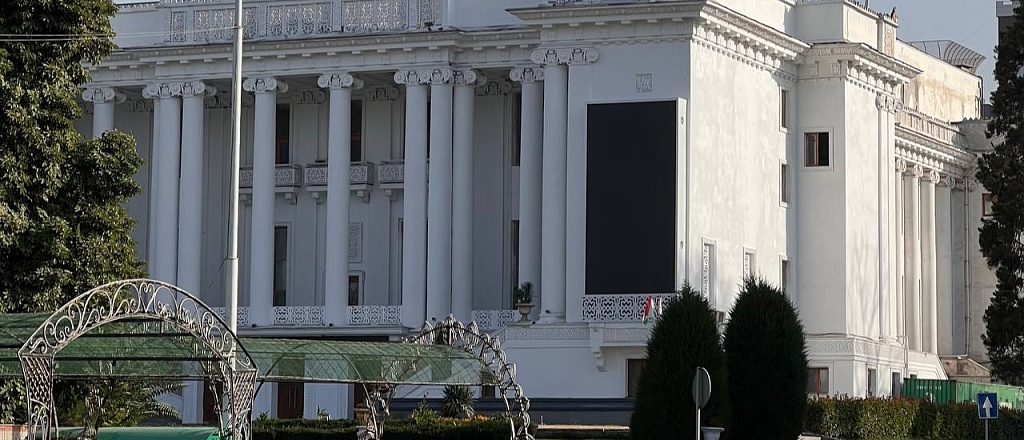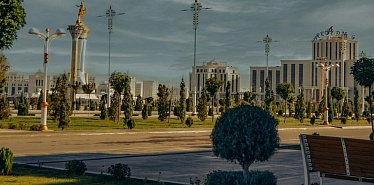In Dushanbe, you'll find beautiful mosques, fascinating museums, and picturesque parks. Here are the 10 main attractions of the capital of Tajikistan that every tourist should visit.
Dushanbe Imam Abu Hanifa Cathedral Mosque
The Central Cathedral Mosque, which opened in the summer of 2023, is one of the largest mosques in Central Asia, with a capacity of up to 133 000 people. The building is decorated with mosaics by Iranian craftsmen and is clad in black and white Greek marble.
Navruz Palace
The luxurious Navruz Palace in central Dushanbe is one of the largest palaces in Central Asia, located on the shores of a lake. It is used for official receptions and ceremonies. The palace features 12 spacious halls decorated with traditional ornaments, wood carvings, and mosaics made from semi-precious stones. The complex grounds include fountains and summer pavilions.
Palace of the Nation
The Palace of the Nation, located in the heart of Dushanbe, is the presidential residence used for official ceremonies and meetings with high-ranking guests. It is considered one of the most beautiful presidential palaces in the world and is often referred to as the "White House" by locals. The Palace of Nations is the centerpiece of an urban ensemble, including parks, a square with a flagpole, the National Museum, a library, and the Parliament. Although the palace is not open to visitors, it can be seen during a walk through the adjacent park.
National Museum of Antiquities of Tajikistan
The National Museum of Antiquities is the main archaeological and ethnographic exhibition in Tajikistan, with a collection of 5,000 exhibits covering the period from the Bronze Age to the early 20th century. The halls feature unique artifacts from Zoroastrian, Buddhist, and Islamic cultures, many of which have been nominated for UNESCO World Heritage status. A highlight of the museum is the 13-meter clay statue of the reclining Buddha.
National Museum
National Museum of Tajikistan includes 22 exhibition halls showcasing the largest collection on the history, archaeology, natural science, and culture of Tajikistan. Exhibitions cover periods from ancient Sogdiana and Bactria to the present day. Some of the most famous exhibits include a replica of the Sleeping Buddha statue and an artificial tree made of precious stones from the Pamirs. The museum also offers collections of coins, ceramics, carpets, jewelry, and decorative arts. Guided tours are available.
Ismaili Center
The Ismaili Center in Dushanbe is an active Jamat Khana mosque. It is the fifth such center in the world. The prayer hall is decorated with architectural ceramics featuring national patterns. In addition to prayers, the center hosts educational and cultural events. On Sundays, the mosque is open to the public, offering free tours.
Flagpole with the Flag of Tajikistan
The 165-meter flagpole with the flag of Tajikistan, opened in 2011, holds the world record as the tallest flagpole in the world and is listed in the Guinness World Records. The flagpole is located on the shore of an artificial lake with a fountain, surrounded by a park with alleys, shrubs, and a rose garden. Nearby are the Palace of the Nation, Rudaki Garden, and the National Museum.
Monument of Ismoil Somoni
Monument of Ismoil Somoni, dedicated to the first emir of the Samanid dynasty, is located at Dusti Square in the center of the district of the same name in Dushanbe. The bronze statue on a granite pedestal depicts the emir holding a scepter, symbolizing the sun. The monument is surrounded by a grand arch, and bronze lions — symbols of peace and stability — stand on either side.
Dusti Square
Dusti Square is the central square of Dushanbe, located in the Somoni district. It is surrounded by key attractions, including Rudaki Park and the Palace of the Nation. The main feature of the square is the Monument of Ismoil Somoni.
Haji Yaqub Mosque
Haji Yaqub Mosque in Dushanbe is a historic center founded in 1890. In 1995, a new two-story mosque with a blue dome was built on the site of the old building, capable of seating up to 12,000 people. It was renovated in 2015 and retains its significance as a spiritual and educational center.














